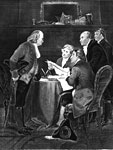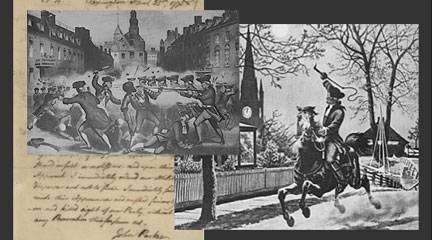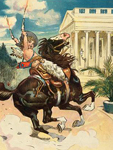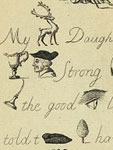Slavery in Colonial British North America
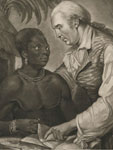
What are some common misconceptions about colonial history?
While there are many misconceptions about this time period in American history, some of the most egregious surround the institution of slavery in the mainland colonies of British North America. It is common to read back into colonial times an understanding of slavery that is based on conditions that existed just prior to the Civil War. It is also important to understand slavery as an historical institution that changed over time and differed from place to place. To that end, one of the most common misconceptions is that slavery was a uniquely or distinctively Southern institution prior to the American Revolution.
In the 13 mainland colonies of British North America, slavery was not the peculiar institution of the South. This development would occur after the American Revolution and during the first decades of the 19th century. Although slaves had been sold in the American colonies since at least 1619, slave labor did not come to represent a significant proportion of the labor force in any part of North America until the last quarter of the 17th century. After that time, the numbers of slaves grew exponentially. By 1776, African Americans comprised about 20% of the entire population in the 13 mainland colonies.
This figure, however, masks important regional differences. It is important to remember that the North American mainland was a relatively minor destination in the global slave-trading network. Less than 4% of all African slaves were sent to North America. The vast majority of enslaved people ended up in sugar-producing regions of Brazil and the West Indies. On the mainland British colonies, the demand for labor varied by region. In contrast to the middle and New England colonies, the Southern colonies chose to export labor-intensive crops: tobacco in Chesapeake (Virginia and Maryland) and rice and indigo in South Carolina, which were believed to be very profitable.
By the time of the American Revolution, slaves comprised about 60% of South Carolina's total population and 40% of Virginia's. While most enslaved people in the Chesapeake labored on small farms, many of those in South Carolina lived on large plantations with a large number of slaves. By 1750, one third of all low-country South Carolina slaves lived on units with 50 or more slaves. Ironically, those who lived on larger plantations were often allowed to complete their tasks for the day and then spend the rest of their time as they liked, free from white supervision. Those on smaller farms, however, often found themselves working side-by-side with their white masters, hired white laborers, and only a small number of slaves. As a result, they faced more scrutiny from whites, were expected to labor for the entire day, and had fewer opportunities to interact with other enslaved African Americans.
Although the largest percentages of slaves were found in the South, slavery did exist in the middle and Northern colonies. The overall percentage of slaves in New England was only 2-3%, but in cities such as Boston and Newport, 20-25% percent of the population consisted of enslaved laborers. Other large cities, such as Philadelphia and New York, also supported significant enslaved populations. Although enslaved people in cities and towns were not needed as agricultural workers, they were employed in a variety of other capacities: domestic servants, artisans, craftsmen, sailors, dock workers, laundresses, and coachmen. Particularly in urban areas, owners often hired out their skilled enslaved workers and collected their wages. Others were used as household servants and demonstrated high social status. Whatever the case, slaves were considered property that could be bought and sold. Slaves thus constituted a portion of the owners' overall wealth. Although Southern slaveholders had a deeper investment in slaves than Northerners, many Northerners, too, had significant portions of their wealth tied up in their ownership of enslaved people.
The widespread ownership of slaves had significant implications. During the battles with Britain during the 1760s and 1770s, American Patriots argued that taxing the colonies without their consent reduced the colonists to the status of slaves. Since individuals in all the colonies owned slaves, this rhetoric had enormous emotional resonance throughout the colonies and helped turn the colonists against the mother county. Moreover, once colonists started protesting against their own enslavement, it was hard to deny the fundamental contradiction that slavery established: enslavement for black people and freedom for white people. Awareness of this contradiction forced white Americans to look at slavery in a new light. If Americans chose to continue to enslave black people, they would have to devise new arguments to justify slavery. It was at this time that arguments about blacks' inherent racial inferiority emerged to rationalize the institution.
Nonetheless, during and immediately after the American Revolution, many individuals in both the North and the South took their revolutionary ideals seriously and concluded that slavery was unjust. They freed, or manumitted, their slaves. Yet each state decided for itself how to handle the issue. Northern states passed laws, or enacted judicial rulings, that either eliminated slavery immediately or put slavery on the road to gradual extinction. The story was different in the South. Because Southern states had a much deeper economic investment in slavery, they resisted any efforts to eliminate slavery within their boundaries. Although some (but not all) of the Southern states allowed individual owners to manumit their slaves if they chose, no Southern state passed legislation that ended slavery completely, either immediately or gradually. This divergence in approach was significant, as it began the time during which slavery would disappear from the North and become uniquely associated with the South. This moment was arguably the fork in the road that ultimately led the country to the sectional divisions that culminated in the coming of the Civil War.
PBS. Africans in America.
This site, associated with the PBS documentary series of the same name, contains numerous primary source documents relating to slaves and slavery in colonial British North America.
University of Virginia and Virginia Foundation for the Humanities. The Atlantic Slave Trade and Slave Life in the Americas: A Visual Record.
This website contains over 1,200 images of various aspects of the slave trade, including contemporaneous drawings of the capture in Africa, the Middle Passage, and life in the Americas.
The Trans-Atlantic Slave Trade Database.
This site contains information on over 35,000 slaving voyages throughout the entire world. The site, which includes interactive maps, provides information on specific slave ships; estimates of the numbers of enslaved people brought from specific parts of Africa to specific parts of the Americas; and an African names database as well as several scholarly essays which analyze the data.
Berlin, Ira. Many Thousands Gone: The First Two Centuries of Slavery in North America. Cambridge: Harvard University Press, 1998.
This book sketches out regional differences in the institution of slavery in various parts of North America and explores the relationship between slave labor and the economy. It also explores how regions changed over time to allow slavery to have more or less importance in defining the society's characteristics.
Carretta, Vincent. Equiano the African: Biography of a Self-Made Man. New York, Penguin, 2005.
This is a critical analysis of one of the most famous autobiographies of an enslaved person who traveled throughout the Atlantic world in the colonial era.
Jordan, Winthrop D. White Over Black: American Attitudes toward the Negro, 1550-1812. Chapel Hill: University of North Carolina Press, 1968.
This is a classic work that discusses changing American attitudes toward Africans and African Americans over time. The book includes a discussion of slavery in the colonial North as well as the South, and explores the effects of the American Revolution on slavery.
Morgan, Edmund S. American Slavery, American Freedom: The Ordeal of Colonial Virginia. New York: W.W. Norton and Company, 1975.
This is a classic work which in the first half discusses the evolution in 17th-century Virginia from a labor force consisting primarily of white indentured servants to one dominated by slaves. The second part of the book grapples with the paradox of how some of the most fervent leaders of the American Revolution could at the same time hold human beings as slaves.
